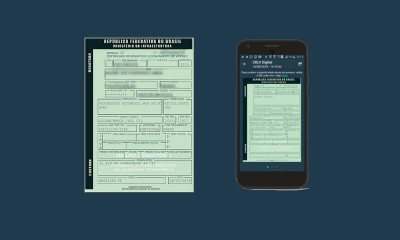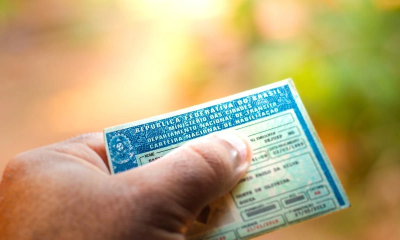Essential Equipment for Long-Distance Motorcycle Trips: A Friendly Guide
Long-distance motorcycle trips can be an exhilarating and memorable experience, but they require careful planning and preparation. One of the most important aspects of planning for a long-distance motorcycle trip is ensuring that you have the essential equipment needed to make the journey safe and comfortable.

The right equipment can make all the difference in the success of a long-distance motorcycle trip. From protective gear to navigation tools, having the right equipment can help riders avoid potential hazards and enjoy the journey to its fullest.
In this article, we will explore the essential equipment needed for long-distance motorcycle trips. Whether you’re a seasoned rider or planning your first long-distance trip, this guide will provide you with the information you need to ensure that you have everything you need for a safe and enjoyable journey.
Pre-Trip Planning and Preparation
Long-distance motorcycle trips require careful planning and preparation to ensure a safe and enjoyable journey. Here are some important considerations to keep in mind before hitting the road.
Route Mapping and Weather Considerations
Planning your route is essential to a successful motorcycle trip. Consider the distance, terrain, and weather conditions along your chosen route. Use online mapping tools to plot your journey and estimate travel times. Check weather forecasts for your route and plan accordingly. Be prepared to adjust your route or itinerary if necessary.
Motorcycle Maintenance and Safety Checks
Before embarking on a long-distance motorcycle trip, it’s important to perform a thorough safety check and maintenance on your bike. Check your tires, brakes, lights, and fluid levels. Make sure your motorcycle is in good working order and that you have all the necessary safety gear, such as a helmet and protective clothing.
Packing Essentials and Checklist
Packing for a long-distance motorcycle trip can be a challenge. Make a checklist of essential items, such as spare parts, tools, and first aid supplies. Pack light and bring only what you need. Consider investing in quality motorcycle luggage to keep your gear secure and organized. Don’t forget to pack appropriate clothing for the weather conditions you may encounter on your journey.
By taking the time to plan, prepare, and pack carefully, you can ensure a safe and enjoyable long-distance motorcycle trip.
Riding Gear and Apparel
When it comes to long-distance motorcycle trips, having the right riding gear and apparel is essential. Not only does it ensure your safety, but it also keeps you comfortable throughout your journey. In this section, we will cover the different types of riding gear and apparel that you should consider for your next adventure.
Helmets and Visor Options
A full-face helmet is the best option for long-distance motorcycle trips as it provides the most protection. It is important to choose a helmet that meets safety standards such as DOT, ECE, or Snell. Additionally, helmets with a visor or shield can help protect your eyes from the wind, debris, and bugs. Some helmets even come with interchangeable visors, allowing you to switch between clear and tinted depending on the weather conditions.
Protective Jackets and Pants
A good motorcycle jacket and pants should be made of abrasion-resistant materials such as leather or textile. CE-approved armor should also be included in the jacket and pants to protect your elbows, shoulders, hips, and knees in case of an accident. It is important to choose a jacket and pants that fit properly to ensure maximum protection and comfort.
Boots and Gloves
Boots and gloves are often overlooked when it comes to riding gear, but they are just as important as the rest of your gear. Motorcycle boots should be sturdy and provide ankle support to protect your feet and ankles. Gloves should also be made of abrasion-resistant materials and fit properly to ensure maximum protection and comfort. Leather gloves are great for cooler temperatures, while textile gloves are better for warmer weather.
In conclusion, having the right riding gear and apparel is crucial for a safe and comfortable long-distance motorcycle trip. By choosing gear that meets safety standards, is made of abrasion-resistant materials, and fits properly, riders can enjoy their journey while staying protected.
Essential Accessories and Equipment
When planning a long-distance motorcycle trip, it’s important to have the right accessories and equipment to ensure a safe and enjoyable journey. Here are a few essential items to consider:
Luggage Solutions for Storage
One of the most important things to consider for a long-distance motorcycle trip is storage space. Saddlebags and tank bags are great options for storing larger items, while a hydration pack can be used to keep water and snacks within easy reach. It’s important to choose luggage that is waterproof and durable to protect your belongings from the elements.
Hydration and Nutrition on the Road
Staying hydrated and nourished is crucial for a successful motorcycle trip. A hydration pack or water bottle holder can be attached to the motorcycle for easy access to water, while snacks such as energy bars and trail mix can provide a quick and convenient source of nutrition.
Navigation and Communication Tools
GPS and communication technology can be invaluable for navigating unfamiliar roads and staying in touch with fellow riders. A GPS unit with a waterproof case can help ensure you stay on track even in inclement weather, while a charger for your phone or other devices can keep them powered up on long rides.
Overall, having the right accessories and equipment can make all the difference in ensuring a safe and enjoyable long-distance motorcycle trip.
On-the-Road Maintenance and Comfort
Long-distance motorcycle trips require riders to be self-sufficient and prepared for any situation that may arise. This includes being able to perform basic maintenance and staying comfortable during long hours on the road. Here are some essential items to consider bringing along:
Repair Kits and Tool Sets
A reliable repair kit and tool set are crucial for any long-distance motorcycle trip. Flat tires and other mechanical issues can happen at any time, and being able to make basic repairs on the road can save time and money. A tire repair kit, along with a set of basic tools such as pliers, screwdrivers, and wrenches, should be included in any rider’s kit.
Comfort and Convenience Items
Staying comfortable on the road is important for both physical and mental well-being. Earplugs can help reduce wind noise and prevent hearing damage, while a good quality sleeping bag can provide a comfortable night’s rest during camping trips. Other items to consider include a portable charger for electronic devices, a hydration system to stay hydrated, and a comfortable seat cushion to prevent soreness during long hours on the road.
Health, Stamina, and Taking Breaks
Long hours on the road can take a toll on a rider’s health and stamina. It’s important to take regular breaks to stretch and rest, as well as stay hydrated and nourished. A first aid kit should also be included in case of any injuries or emergencies. Additionally, staying physically fit and practicing good posture while riding can help prevent fatigue and discomfort.
In summary, on-the-road maintenance and comfort are essential for any long-distance motorcycle trip. Riders should be prepared with repair kits and tool sets, as well as comfort and convenience items such as earplugs, sleeping bags, and hydration systems. Taking regular breaks, staying hydrated and nourished, and practicing good posture can also help maintain health and stamina during long hours on the road.
Frequently Asked Questions
What items should I include in my motorcycle trip checklist?
Before embarking on a long-distance motorcycle trip, it’s important to have a checklist of items that you’ll need. This includes essential items like a helmet, riding gloves, protective clothing, and a first-aid kit. You should also bring a map or GPS, a tool kit, spare parts, and a tire repair kit. It’s important to pack light and only bring what you need, as space on a motorcycle is limited.
What are the top things to pack for a multi-day motorcycle adventure?
For a multi-day motorcycle adventure, you’ll need to bring more than just the essentials. You should pack enough clothing for the duration of your trip, including layers for varying weather conditions. You’ll also need a sleeping bag, tent, and camping gear if you plan on camping along the way. Other important items include a portable charger, camera, and toiletries.
How can I best prepare my motorcycle for an extended journey?
Before embarking on a long-distance motorcycle trip, it’s important to make sure your motorcycle is in good condition. This includes checking the tires, brakes, and fluids, as well as ensuring that all lights and signals are functioning properly. You may also want to consider adding accessories like a windshield or luggage rack to make your journey more comfortable.
What should women specifically consider when packing for a motorcycle trip?
Women should consider packing clothing that is comfortable and functional for riding, such as moisture-wicking base layers and protective gear designed specifically for women. It’s also important to pack feminine hygiene products and any necessary medications. Additionally, women may want to consider packing a portable urination device for convenience during long stretches of riding.
What are the minimalist essentials for packing on a motorcycle tour?
For a minimalist approach to packing on a motorcycle tour, focus on bringing only the essentials. This includes a helmet, riding gloves, protective clothing, a first-aid kit, and a map or GPS. You may also want to bring a portable charger, tool kit, and tire repair kit. Remember to pack light and only bring what you need.
How can I prepare myself physically and mentally for a long-distance motorcycle ride?
Preparing yourself physically and mentally for a long-distance motorcycle ride is important for a safe and enjoyable journey. This includes getting enough rest before your trip, staying hydrated, and stretching regularly during breaks. You should also prepare mentally by setting realistic expectations and being aware of the potential risks and challenges of a long-distance ride. It’s important to take breaks when needed and listen to your body to avoid fatigue or injury.
-

 Trânsito2 years ago
Trânsito2 years agoMudança ou Adição de Categoria da CNH: Como Fazer e Quais os Requisitos
-

 Trânsito2 years ago
Trânsito2 years agoCadastro de Instrutor de Trânsito: Como Fazer a Inscrição ou Renovação
-

 Trânsito2 years ago
Trânsito2 years agoCNH Digital: Como Funciona e Quais os Benefícios para os Motoristas
-

 Trânsito2 years ago
Trânsito2 years agoCertidão de Prontuário: Tudo sobre a Documentação do Condutor
-

 Trânsito2 years ago
Trânsito2 years agoAlteração de Dados Cadastrais: Como Atualizar as Informações do Veículo ou do Condutor
-

 Trânsito2 years ago
Trânsito2 years agoTransferência de Veículo: Como Fazer o Registro em Outro Estado ou Município
-

 Trânsito2 years ago
Trânsito2 years agoPerda ou Roubo da CNH: Como Solicitar a 2ª Via pelo Site do DETRAN
-

 Trânsito2 years ago
Trânsito2 years agoCRLV Eletrônico: A Nova Era da Documentação Veicular
